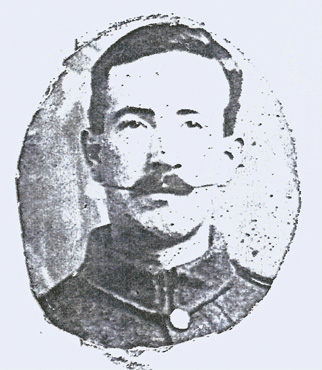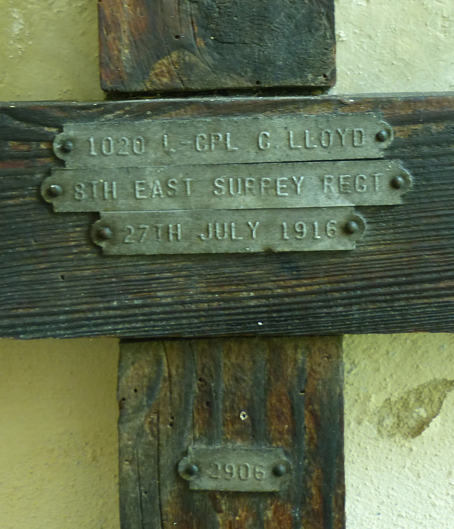
Charles Lloyd
Charles Lloyd was born in Melton on 14th September 1892. In 1911, he was living at home with his parents and working as a general labourer.
Charles attested in August 1914 with the East Surrey Regiment, first serving with the 2nd Battalion, followed by stints with the 8th and the 9th Battalions.
After training, Charles was sent to France on 23rd March 1915 and joined up with the 2nd Battalion at St Eloi, near Ypres, as part of a draft of ninety men. Within hours of their arrival, Charles found himself in trenches on the front line at Zonnebeke for what turned out to be a fairly uneventful introduction to the front line.
On 22nd April, Charles was back in the trenches and the Germans were reported to be massing, in preparation for an attack. This came at midnight the following day, but they were successfully repulsed. Over the next few days, Charles and the battalion came under a constant trench mortar which caused severe damage to their trenches, this was followed by assaults by the enemy from which the battalion sustained a large number of casualties. On the 26th alone, the casualty count was eighty-four dead, one hundred and nine wounded and forty-three missing; Charles was one of the wounded and was taken to the 3rd Casualty Clearing Station at Poperinghe. He had suffered a gunshot wound to his head and was immediately transferred “To Base”.
By the time Charles had recovered from his wounds, the 2nd East Surrey Regiment had been posted to Salonica. Instead, he was assigned to the 8th East Surrey Regiment, who first went to France on 27th July 1915. On 11th July 1916, Charles was one of three hundred and twenty-nine men drafted in to reinforce the 9th Kings Own Yorkshire Light Infantry at Ville who had sustained a large number of casualties at the opening of the Battle of the Somme on 1st July. The battalion war diary says:
“Further draft of 329 O.R. arrived with only a very few belonging to the Kings Own Yorkshire Light Infantry.”
Charles was assigned to “C” Company and, on the 13th July, they proceeded to trenches at Bottom Wood near Mametz. The following day, the battalion attacked the German lines at Bazentin-Le-Petit Wood and successfully captured their objective. During the attack, Charles was wounded once more receiving shrapnel wounds to his hip, leg and left ear. He was transported to the 34th Casualty Clearing Station and, from there, on the No.6 Ambulance Train to hospital in Rouen. Here, on the 27th July, Charles died from his wounds and was buried in St Sever Cemetery. His gravestone bears the inscription “Honour and Glory”. For his war service, his family received his 1914-15 Star and British War and Victory Medals.
Charles Lloyd’s Battlefield Grave Marker can be seen in Melton Old Church.

Detail of Charles Lloyd's Battlefield Cross preserved at Melton Old Church
